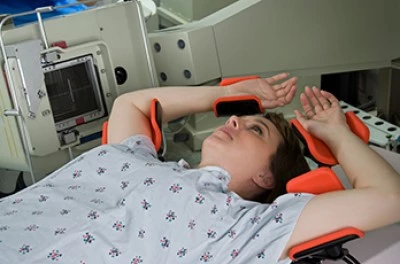Breast Cancer Stages
When you’re diagnosed with breast cancer, your doctor will likely discuss the stages of breast cancer with you. Breast cancer staging is a way of classifying the extent and severity of your disease. Doctors use this information to help determine the best breast cancer treatment options.
The TNM Staging System
The TNM Staging system assigns a number after each letter to signify the size of the tumor (T), the number of lymph nodes involved (N) and whether the cancer has spread or metastasized (M). For example, a T1N2M0 tumor is a small primary tumor with two lymph nodes containing evidence of cancer and no sign of metastasis. Once the TNM numbers have been assigned, this information is used to determine stage grouping.
Grouping Breast Cancer Stages
There are five stages of breast cancer. These stages are determined based on the tumor size, lymph node involvement and whether the cancer has spread to another part of the body.
Stage 0
Non-invasive or in situ cancer (DCIS, LCIS). In Stage 0 there is no evidence of cancer cells breaking out of the part of the breast in which they started. Paget’s disease is typically stage 0.
Stage I
Invasive breast cancer with small tumor size and limited nodal involvement.
Stage II
Tumor is between 2 and 5 centimeters with or without nodal involvement.
Stage III
Tumor is over 5 centimeters and/or over 4 lymph nodes are involved and/or tumor is in the chest wall or skin.
Stage IV
The cancer has spread beyond the breast and lymph nodes to other parts of the body such as the bones, liver or lungs. Stage IV is also known as metastatic breast cancer.
Stage I through III can be broken down further into substages. Read more in-depth information about the TNM system and staging on American Cancer Society’s website.
A Word of Caution
We do not recommend that you go on websites that provide prognosis and survival information based on your stage of breast cancer. Typically, such information is based on data that is 10 years old or older. Instead, talk with your doctor about your questions and concerns.


